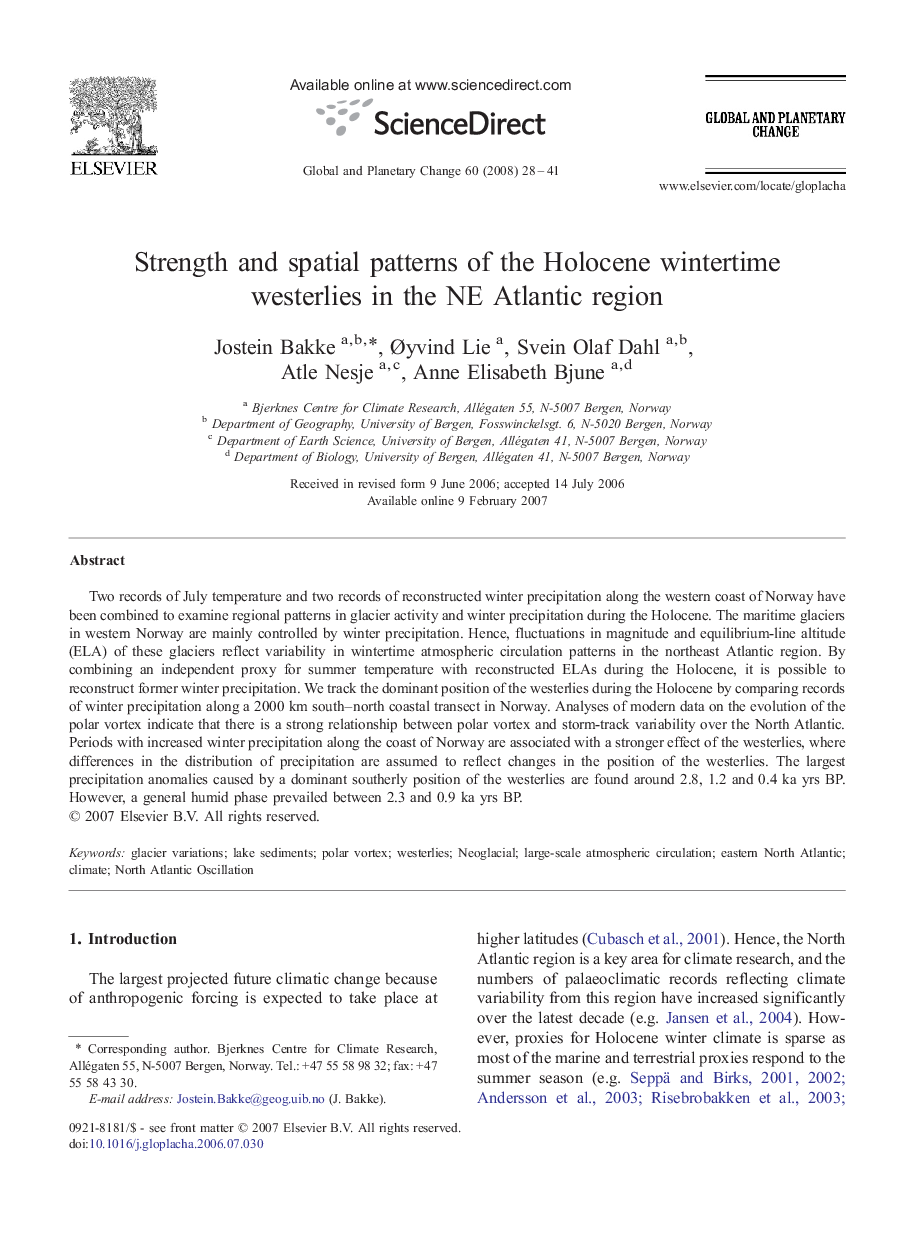| Article ID | Journal | Published Year | Pages | File Type |
|---|---|---|---|---|
| 4464302 | Global and Planetary Change | 2008 | 14 Pages |
Two records of July temperature and two records of reconstructed winter precipitation along the western coast of Norway have been combined to examine regional patterns in glacier activity and winter precipitation during the Holocene. The maritime glaciers in western Norway are mainly controlled by winter precipitation. Hence, fluctuations in magnitude and equilibrium-line altitude (ELA) of these glaciers reflect variability in wintertime atmospheric circulation patterns in the northeast Atlantic region. By combining an independent proxy for summer temperature with reconstructed ELAs during the Holocene, it is possible to reconstruct former winter precipitation. We track the dominant position of the westerlies during the Holocene by comparing records of winter precipitation along a 2000 km south–north coastal transect in Norway. Analyses of modern data on the evolution of the polar vortex indicate that there is a strong relationship between polar vortex and storm-track variability over the North Atlantic. Periods with increased winter precipitation along the coast of Norway are associated with a stronger effect of the westerlies, where differences in the distribution of precipitation are assumed to reflect changes in the position of the westerlies. The largest precipitation anomalies caused by a dominant southerly position of the westerlies are found around 2.8, 1.2 and 0.4 ka yrs BP. However, a general humid phase prevailed between 2.3 and 0.9 ka yrs BP.
